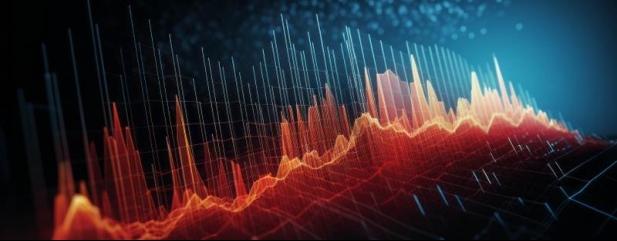Fear of missing out has supplanted fears of a market sell-off

With the S&P 500 index racking up gains in 17 of the last 20 weeks, a feat it hasn’t managed to achieve since 1964, it’s fair to say investors are making hay in US stocks again this year.
The benchmark has now posted no fewer than 17 new all-time highs since the start of January, the latest just last week despite a stronger-than-expected inflation report for February which previously would have seen stocks sink.
Investors no longer seem worried when the Federal Reserve will cut interest rates, or even by how much, they are enjoying the ride for now and there is no sense of fear the market might fall.
One interesting side effect of this one-way traffic in stocks is volatility is extremely low – almost unnaturally so as volatility by its own nature is volatile, and normally it would rise and fall whether the market is going up or down.
The most popular and readily-available measure of investor expectations of volatility is the VIX index on the Cboe (Chicago Board Options Exchange), which measures the expected fluctuation in US shares over the next month.
Put simply, the higher the VIX the higher the implied volatility in stock prices, and the lower the VIX the lower the volatility.
The level of the VIX is calculated using options prices, but for our purposes it is enough to know that over time it has averaged 15 during periods of low volatility and has climbed as high as 80 in market panics such as during the pandemic.
The index isn’t a lead indicator as it doesn’t predict events, rather it responds to them, but when it does spike it is usually a sign stocks are headed down.
The curious thing about the VIX – or ‘fear index’ as it is also known – is it has been strangely low during 2023 and 2024, averaging 17 last year and just 13.5 this year.
The Bank for International Settlements has suggested this lack of volatility is the result of the explosion of structured products such as ETFs (exchange-traded funds) built to generate income, and this is a possibility given these assets have jumped from $20 billion before the pandemic to $120 billion today.
The Cboe itself has described the decline in volatility as ‘not only historic but surprising’ but suggests the cause is the change in economic outlook from ‘hard landing’ to potentially no landing, which has lowered volatility across every asset class.
We won’t truly know why the VIX is so low until something comes along to upset the status quo and volatility increases, but for now investors seem happy to carry on regardless.
Important information:
These articles are provided by Shares magazine which is published by AJ Bell Media, a part of AJ Bell. Shares is not written by AJ Bell.
Shares is provided for your general information and use and is not a personal recommendation to invest. It is not intended to be relied upon by you in making or not making any investment decisions. The investments referred to in these articles will not be suitable for all investors. If in doubt please seek appropriate independent financial advice.
Investors acting on the information in these articles do so at their own risk and AJ Bell Media and its staff do not accept liability for losses suffered by investors as a result of their investment decisions.
Issue contents
Exchange-Traded Funds
Feature
- Understand whether Super Micro Computer is an investment flop or technology great
- Do markets actually care who wins the US election in November?
- Construct an ISA portfolio: Put the building blocks in place for investment success
- Fear of missing out has supplanted fears of a market sell-off
- Find out how London Tunnels plans to create one of the biggest tourist attractions in the capital
Great Ideas
Money Matters
News
- Springfield Properties hits new highs as confidence recovers
- Focusrite shares nosedive after company warns on sales and earnings
- Scottish Mortgage tackles NAV discount with £1 billion buyback while Witan invites new managers
- Nvidia unveils new ‘superchip’ at its first conference for four years
- Could litigation headaches lead to a breakup of Reckitt Benckiser?

 magazine
magazine








